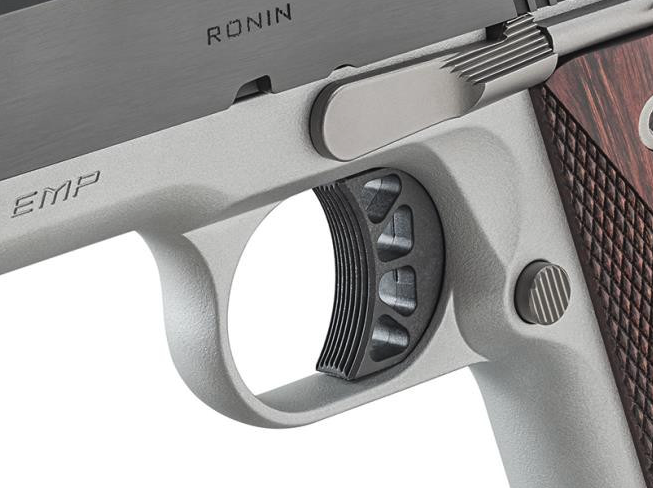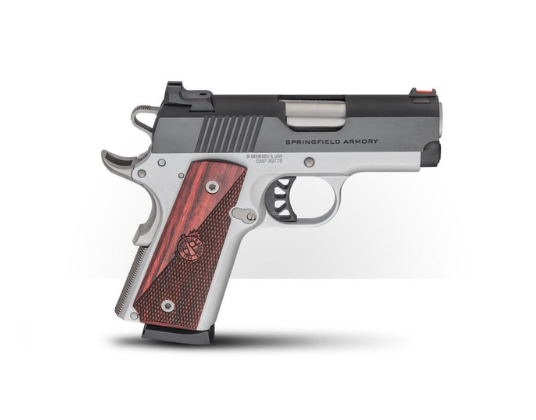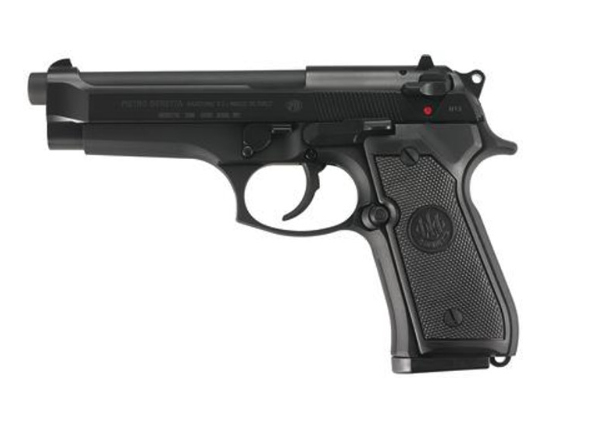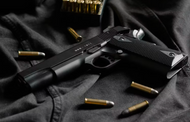Double Action vs Single Action: Complete Guide
May 23rd 2023
Firearms are available in various configurations, each designed with specific features to meet different needs and preferences. Two common types of firearm actions are single-action and double-action. Understanding the safety and practicality of each action is crucial for responsible gun owners and enthusiasts. In this article, we will delve into the debate of double action vs. single action, exploring their safety considerations, practicality for carry purposes, and notable examples of firearms belonging to each category.
Single Action vs. Double Action: Safety Considerations
Firearm safety is paramount, and understanding the safety aspects of single-action and double-action firearms is essential.
Single-action firearms operate by manually cocking the hammer or striker before the first shot. While this action may provide a lighter and more consistent trigger pull, it also poses potential safety concerns. The hammer can be inadvertently triggered if the firearm is dropped or the hammer is caught on clothing or other objects. However, with proper training and adherence to safe handling techniques, the risks associated with single-action firearms can be minimized.

On the other hand, double-action firearms offer an alternative mechanism. With double-action, the trigger performs two functions: cocking the hammer or striker and then releasing it to fire the round. This eliminates the need for manually cocking the firearm before each shot. The double-action trigger pull is usually longer and heavier, making accidental discharges less likely. However, the longer trigger pull can also affect accuracy and shooting speed.
Comparing the safety levels of single-action and double-action firearms requires a holistic examination of empirical data, user proficiency, and training. While single-action firearms may have inherent risks, proper handling and training can mitigate these risks. Double-action firearms, with their longer trigger pull, provide an additional layer of safety during high-stress situations. Ultimately, user responsibility and adherence to safety protocols play a crucial role in firearm safety regardless of the action type.
Double Action for Carry: Practicality and Considerations
Carrying a firearm for personal protection demands practicality and careful consideration. Double-action firearms offer specific advantages for carry purposes.
Double-action carry firearms are designed to be carried with a round in the chamber and the hammer or striker decocked. This provides an added layer of safety during the draw and holstering process. The longer and heavier trigger pull of double-action triggers reduces the chances of accidental discharges, especially in high-stress situations. For individuals seeking a firearm with enhanced reliability and consistency in trigger pull, double-action options can be appealing.
However, concerns and limitations should also be acknowledged. The longer trigger pull in double-action firearms can affect accuracy, especially in rapid-fire scenarios. Training and practice are necessary to develop proficiency in managing the trigger pull while maintaining accuracy. Additionally, some individuals may find the heavier trigger pull less desirable for their shooting style or preferences. Balancing the benefits of double-action carry with personal needs and comfort is crucial in making an informed decision.
Single Action for Carry: Practicality and Considerations
While single-action firearms may not be as popular for carry purposes, they still offer unique advantages that cater to specific preferences.
Single-action carry firearms are typically carried with the hammer or striker cocked, ready to fire. For experienced shooters, single-action triggers can provide a lighter and more consistent trigger pull, enhancing accuracy. The simplicity and ease of use associated with single-action firearms make them appealing to those with extensive training and experience.
However, certain concerns and limitations accompany single-action carry. The increased risk of accidental discharges during holstering due to the exposed hammer or striker requires extra caution and awareness. Proper training and adherence to safe handling techniques are essential for mitigating these risks. Furthermore, acquiring the necessary skills and proficiency to effectively manage single-action firearms may require additional practice and dedication.
Gun Examples: Single Action vs. Double Action
Examining notable examples of firearms belonging to each category sheds light on the practical application of single-action and double-action actions.
In the realm of single-action firearms, historical revolvers like the Colt Single Action Army, known as the "Peacemaker," have left a significant mark in firearm history. These revolvers feature a single-action mechanism and are revered for their reliability and accuracy. Modern single-action semi-automatic pistols, such as the iconic 1911-style pistols, continue to be popular among firearm enthusiasts for their timeless design and exceptional performance.

In contrast, double-action firearms encompass a wide range of options. Double-action revolvers, like the Smith & Wesson Model 686, are renowned for their ruggedness and versatility. They offer a reliable mechanism and are favored by law enforcement and civilians alike. Double-action semi-automatic pistols, such as the Beretta 92FS, have gained popularity for their capacity, ergonomics, and consistent trigger pull.

Conclusion
When considering the double action vs. single action debate, it is crucial to weigh the safety considerations and practicality of each firearm action type. Both single-action and double-action firearms have their merits and limitations.
Safety is of utmost importance in firearm ownership, and understanding the potential risks associated with each action type is essential. Double-action firearms offer an added layer of safety during the draw and holstering process, while single-action firearms demand extra caution due to the exposed hammer or striker.
The practicality of each type for carry purposes depends on individual preferences, skill level, and training. Double-action firearms provide enhanced safety features and consistency in trigger pull, making them appealing for those seeking reliability in high-stress situations. Single-action firearms cater to experienced shooters who appreciate the lighter trigger pull and simplicity they offer.
Ultimately, responsible firearm ownership requires thorough research, proper training, and adherence to safety protocols, regardless of the chosen action type. By understanding the safety considerations and practicality of double action and single action, individuals can make informed decisions that align with their needs and preferences, ensuring a responsible and secure shooting experience.


